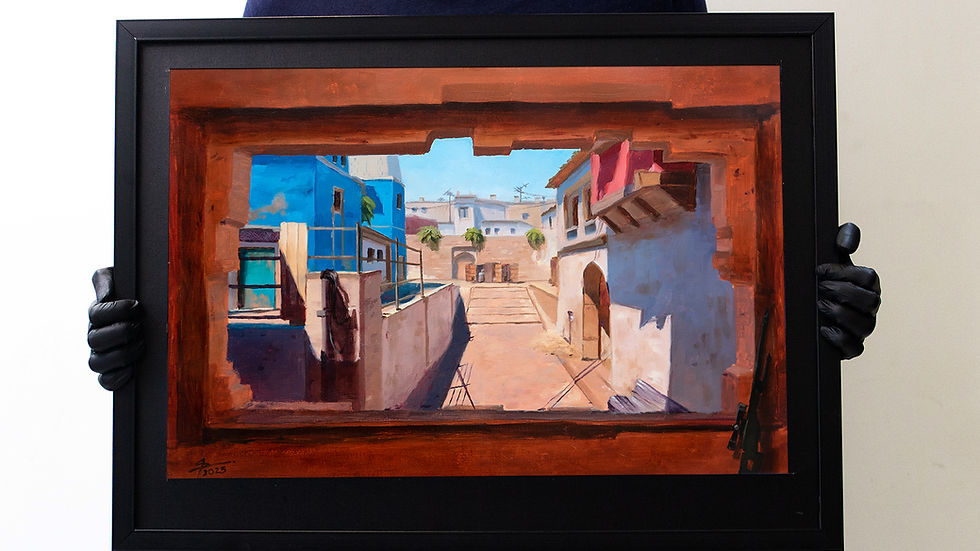Essential Tips for Caring for Your Oil Paintings
- shreyasfineart
- May 29
- 3 min read
Updated: 6 days ago

Oil paintings are timeless pieces of art that can last for generations if properly cared for. Understanding the nature of oil paint and how to handle it ensures your artwork remains vibrant and undamaged over time. Here are some essential care and handling tips to keep your oil paintings in pristine condition:
Drying Time and Varnish
While an oil painting may feel dry to the touch, the drying process continues beneath the surface. It typically takes about six months for all layers of paint to fully cure. It’s essential to mark the date the painting was created on the back. A permanent varnish can only be applied after the artwork is fully cured.
To Frame With Glass or Not?
Unlike watercolors or prints, oil paintings generally do not require glass. In fact, adding glass can sometimes do more harm than good. Condensation can form behind the glass, or the glass might come into contact with the paint surface, both of which can damage the artwork. If you prefer to frame it with glass for aesthetic reasons or protection, ensure there’s adequate space between the painting and the glass using a mat or mount.
Optimal Lighting Conditions
Proper lighting enhances the viewing experience while preserving the integrity of your painting. Avoid placing your oil paintings in direct sunlight, as UV rays can fade colors over time.
LED lighting is the best choice. It emits minimal heat and UV radiation, ensuring your painting's longevity. Select bulbs with a high Color Rendering Index (CRI) of 90+ to accurately reflect the artwork's true colors. For display lighting, be sure to position the light source at a 30-degree angle. This minimizes glare and unwanted reflections.
Temperature and Humidity Management
Extreme temperature fluctuations or high humidity can damage oil paintings. Keep your artwork in a stable environment, away from direct exposure to heaters, radiators, or fireplaces. Avoid hanging paintings in damp areas where high humidity can lead to warping or mold.
Dusting and Cleaning Your Art
Dust naturally settles on paintings over time. To clean the surface, gently use a soft brush, static duster, or a clean, dry rag. Always be light-handed to avoid disturbing the paint.
Avoid using water, chemicals, or cleaning products, as they can damage the delicate paint layers. Regular, gentle dusting will keep your artwork looking its best.
Importance of Regular Checks
Every few months, take time to inspect your oil paintings. Look for any signs of damage such as discoloration, cracks, or distortions. Early detection allows for timely repairs, preserving the integrity of your artwork.
The Role of Professional Restoration
If you notice any significant damage or deterioration, consider seeking professional restoration services. Trained conservators have the expertise to address various issues, from minor cleaning to major repairs. This investment can significantly extend the life of your artwork.
Emotional Value of Art
Caring for an oil painting doesn't require much effort, just a little knowledge and consistency. By following these best practices, your artwork can remain in excellent condition for decades, even centuries. This maintains its beauty and emotional value for future generations to enjoy.
Whether you're an artist or an art enthusiast, understanding how to care for your oil paintings is crucial. The joy these works of art bring can be immense, and protecting them ensures that this joy continues for years to come. Remember, your oil paintings are not just decorations; they are valuable pieces of your story and history.
By implementing these tips, your oil paintings will not only retain their beauty but also pass on their significance to those who admire them. Happy caring!














Comments